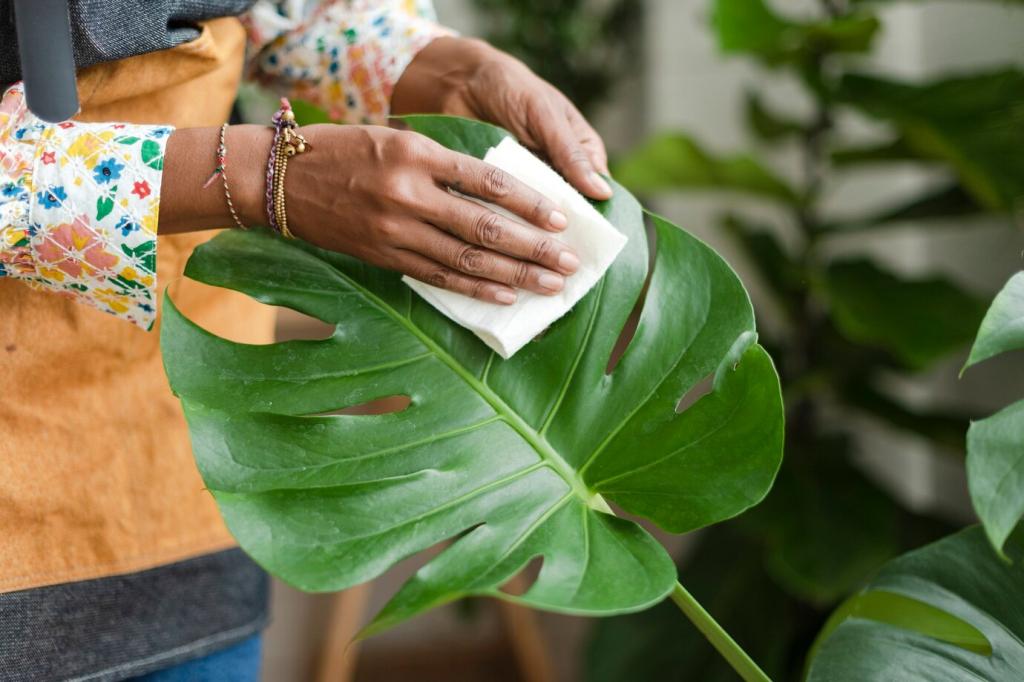Today’s Theme: Homemade Antibacterial Sprays for Furniture
Welcome! We’re diving into Homemade Antibacterial Sprays for Furniture—simple, safe, and satisfying solutions to refresh couches, tables, and treasured pieces. Expect science-backed tips, gentle recipes, and real-life stories. Subscribe and comment with your questions or favorite blends to keep the conversation sparkling.
Getting Started: What Makes a Furniture Spray Antibacterial
Alcohol at around 70% disrupts bacterial membranes, while mild acids like white vinegar help with deodorizing and lowering surface pH. Contact time matters: let your homemade antibacterial furniture spray sit briefly before wiping so it can actually do its quiet, effective work.
Getting Started: What Makes a Furniture Spray Antibacterial
Sealed wood, unfinished wood, fabric, microfiber, and leather all behave differently with antibacterial furniture sprays. Always test in a hidden spot first, apply lightly, and use a soft microfiber cloth. A careful approach prevents clouding, water marks, or finish dullness on cherished furniture.
Getting Started: What Makes a Furniture Spray Antibacterial
Ventilate rooms, label bottles clearly, and store your antibacterial furniture spray out of reach. Go light with essential oils, avoid phenolic oils around cats, and never mix vinegar with hydrogen peroxide in the same bottle. Share your safety tips below to help fellow readers stay mindful.



Essential Oils: Aroma with Awareness

Choosing oils for furniture sprays
Consider lavender, lemon eucalyptus, or thyme (thymol) in very low amounts for your antibacterial furniture spray. Start with 2–5 drops per 8 ounces to minimize residue and sensitivity. Remember, essential oils can affect finishes; patch testing remains your best friend every single time.

Scent blends that respect surfaces
A soft blend of lavender and sweet orange pairs beautifully with fabric sprays, while a single drop of cedarwood feels cozy on sealed wood. Keep scents subtle so your antibacterial furniture spray complements, not overwhelms, the room. Share your favorite blends in the comments.

Myth-busting oils and disinfection
Essential oils can support freshness and add light antimicrobial benefits, but they are not complete disinfectants on their own. Your antibacterial furniture spray does the heavy lifting through alcohol content and technique. Use oils as accents, not the backbone of sanitation.
Mist lightly and honor dwell time
Spray onto a microfiber cloth for wood and leather; mist fabric lightly from 8–12 inches away. Let your antibacterial furniture spray sit for 30–60 seconds before wiping. That short pause helps reduce bacteria while keeping surfaces calm and free from streaks.
Cloth control beats over-spraying
Direct spraying can overload finishes. Instead, dampen your cloth with the antibacterial furniture spray and work in smooth, small sections. This limits oversaturation, preserves seams and stitching, and gives you the tactile feedback needed to protect fragile surfaces lovingly.
Deodorize cushions without drama
Pair a light mist of your antibacterial furniture spray with airflow or sunlight near a bright window. Avoid direct, harsh sun that can fade fabrics. A gentle flip, a few minutes of breathing space, and your living room will feel like new again.

Troubleshooting Common Furniture Woes
01
Buff with a dry microfiber cloth after the antibacterial furniture spray dries. If streaks persist, reduce soap, use distilled water only, and wipe strictly with the grain. A second light pass often restores that satiny, calm finish you fell in love with.
02
Mist evenly edge-to-edge so drying is uniform. Blot with a clean towel and brush nap after it dries. If a ring remains, re-mist the entire panel with a fine spray of your antibacterial furniture blend and dry under a fan for consistency.
03
You may have overused alcohol or water. Apply a leather conditioner recommended by the manufacturer after cleaning. Going forward, keep your antibacterial furniture spray application minimal, and always buff gently with a dry cloth to revive that supple, natural sheen.
Storage, Shelf Life, and Tools of the Trade
Use amber glass or high-quality HDPE plastic with a reliable fine-mist sprayer. Alcohol can degrade certain plastics, so check compatibility. A well-made bottle helps your antibacterial furniture spray stay potent and evenly dispersed across sensitive surfaces.
Stories, Rituals, and Community Inspiration
A thrifted chair with a second life
I rescued a vintage armchair by spot-testing, lightly misting with an antibacterial furniture spray, then airing it by a sunny window. The musty note faded, the fabric brightened, and now it’s the reading nook everyone fights over. What piece are you rescuing next?
The five-minute weekend reset
Set a timer, grab your antibacterial furniture spray, and sweep the living room: coffee table, remotes, armrests, and cushion tops. One song, one cloth, one grateful future you. Share your playlist and routine in the comments so we can all steal your best ideas.
Join the conversation and subscribe
Have a sensitive finish, a stubborn odor, or a favorite oil blend for your antibacterial furniture spray? Tell us below, subscribe for weekly tips, and vote on next week’s experiment. Your stories shape this community and the recipes we test together.
